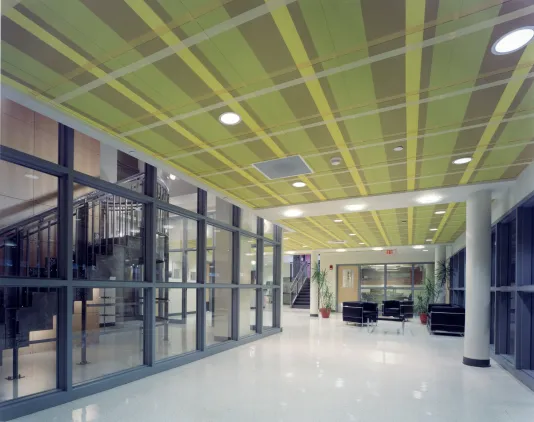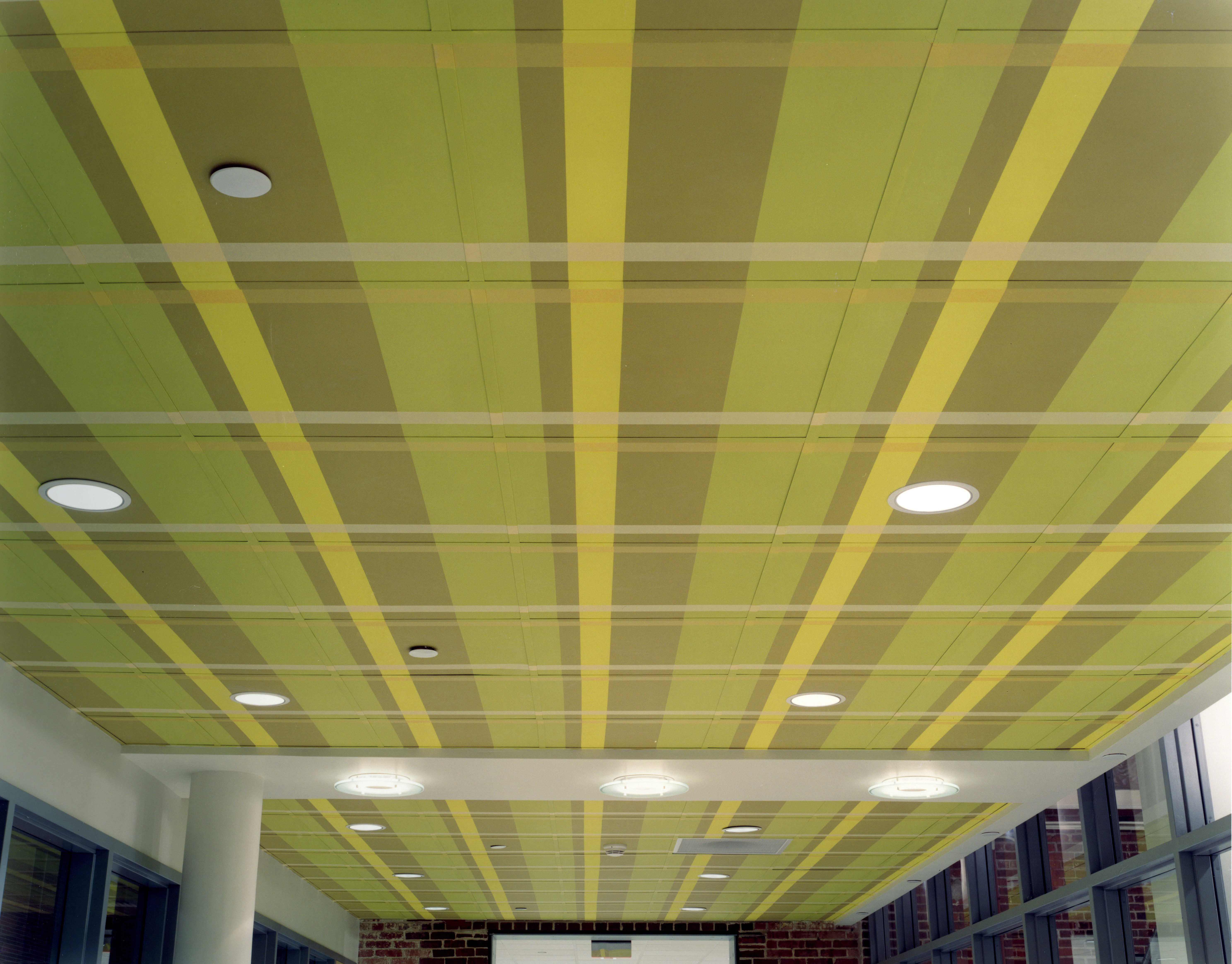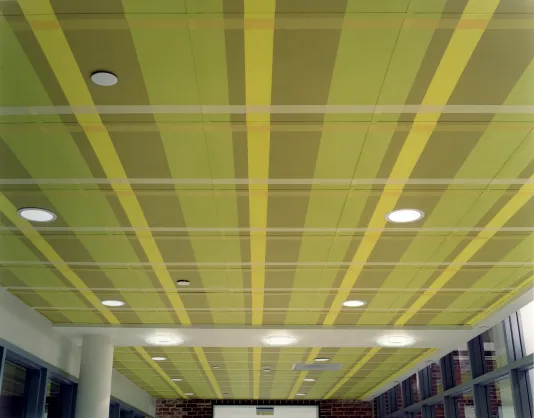Jorge Pardo, Untitled, 2001. Commissioned with MIT Percent-for-Art Funds.
Untitled, 2001

Jorge Pardo’s practice spans art and design, often taking the form of installations involving murals, sculptures, and furnishings such as lamps and benches.
What unifies these disparate works are the artist’s use of color, from jewel tones to sunset palettes, and his interest in defining space, whether through light or with exuberant shapes. The idiosyncrasies of his sculptural volumes—bulging, tiered, and decorative, with an emphasis on line—are usually balanced by their vertical symmetry.
Pardo’s commissioned installation is an example of his site-specific approach, and a continuation of his embrace of functional building materials. His design of brown, green, and yellow stripes with intersecting beige and white lines covers not the walls, but the gridded ceiling panels of the Warehouse Dormitory. The pattern transforms the lobby through its optical emphasis on the length of the space and its distinctive aesthetic, which resembles plaid and therefore recalls the warmer, more domestic materials of clothing and textiles––fitting for a residential home for students. Pardo’s mural draws the eye upward, lending interest to what would otherwise be a utilitarian surface of acoustic paneling. Slight interruptions in the otherwise straight lines call attention to the supporting grid of the ceiling itself, while changes in the opacity of the stripes indicate the order of the paint’s application: some were silk screened directly onto the acoustic tiles, while others were hand painted onto the metal hanging system.
*Note - this artwork is only accessible to the public by guided tour.
Jorge Pardo (b. 1963) was born in Havana, Cuba and immigrated to the United States at the age of six. He received his Bachelor of Fine Arts from the ArtCenter College of Design in Pasadena, California, in 1988. Pardo rejected the fine art notion of sculpture as an object isolated from use, and opposed to the functional realm of design. Instead, he fused his site-specific works with their surroundings, within and beyond institutional contexts. In 1994, he began a project with the Museum of Contemporary Art, Los Angeles, in which his carefully designed, nearly two-thousand-square-foot Mount Washington house functioned as both his private residence and a public extension of the museum. He has also designed and produced furniture, lamps, wallpaper, printed fabrics, a sailboat, and artist’s books. Pardo’s work has been featured at the Pinacoteca do Estado de São Paulo; Los Angeles County Museum of Art; and Museum of Contemporary Art, Chicago. He has also been included in group exhibitions at the Cooper Hewitt, Smithsonian Design Museum, New York; Dia Art Foundation, New York; Whitechapel Gallery, London; and Museum of Modern Art, New York. He received the Smithsonian American Art Museum’s Lucelia Artist Award and a grant from the Louis Comfort Tiffany Foundation. Pardo lives and works in Los Angeles.


